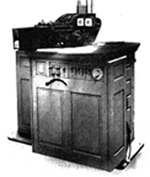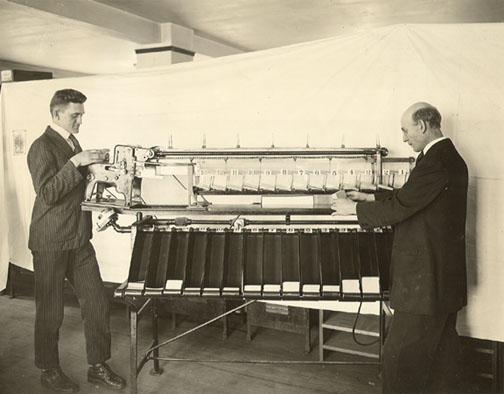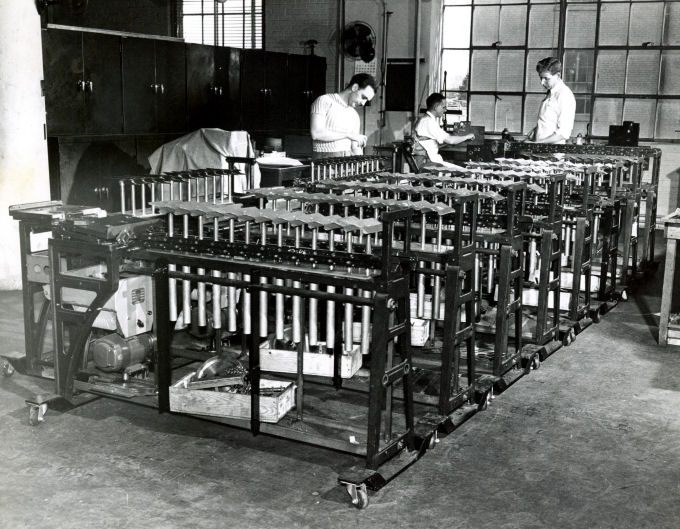History
You are here: Census.gov › History › Innovations › Technology
Technology

View larger image
Auto Tabulating Machine.
Photo courtesy of the National Archives.
As the U.S. population grows, the U.S. Census Bureau continuously seeks to improve the speed and accuracy of the census-taking process. Before becoming a permament statistical agency in 1902, census employees and entrepreneurs assisted the Census Bureau lead the world in efforts to speed data processing and publication.
Examples of the Census Bureau's innovations include the punch card and electronic tabulator technology developed by Herman Hollerith to speed the tallying of the 1890 census. The Census Bureau continued updating and using Hollerith's electronic tabulators until the 1950 census when they were replaced by UNIVAC I, the first modern computer installed by a civilian government agency.
In the 1970s, the agency developed Dual Independent Map Encoding (DIME) files and the TIGER system designed in the 1980s laid the groundwork for today's geographic information system industry. The global positioning systems many Americans rely on in their automobiles and cell phones, as well as online mapping websites owe their existence to the the Census Bureau's geographic and cartographic innovations.
The early adoption of the computer tape in the 1970s, CD-ROM technology in the 1980s and the Internet in the 1990s made Census Bureau information widely available to a growing number of data users.

View larger image
An automatic electric card
punch machine, 1910.

View larger image
Operating a card sorter, 1920.

View larger image
Building card sorters, 1930s.

 Facebook
Facebook Twitter
Twitter Flickr
Flickr YouTube
YouTube